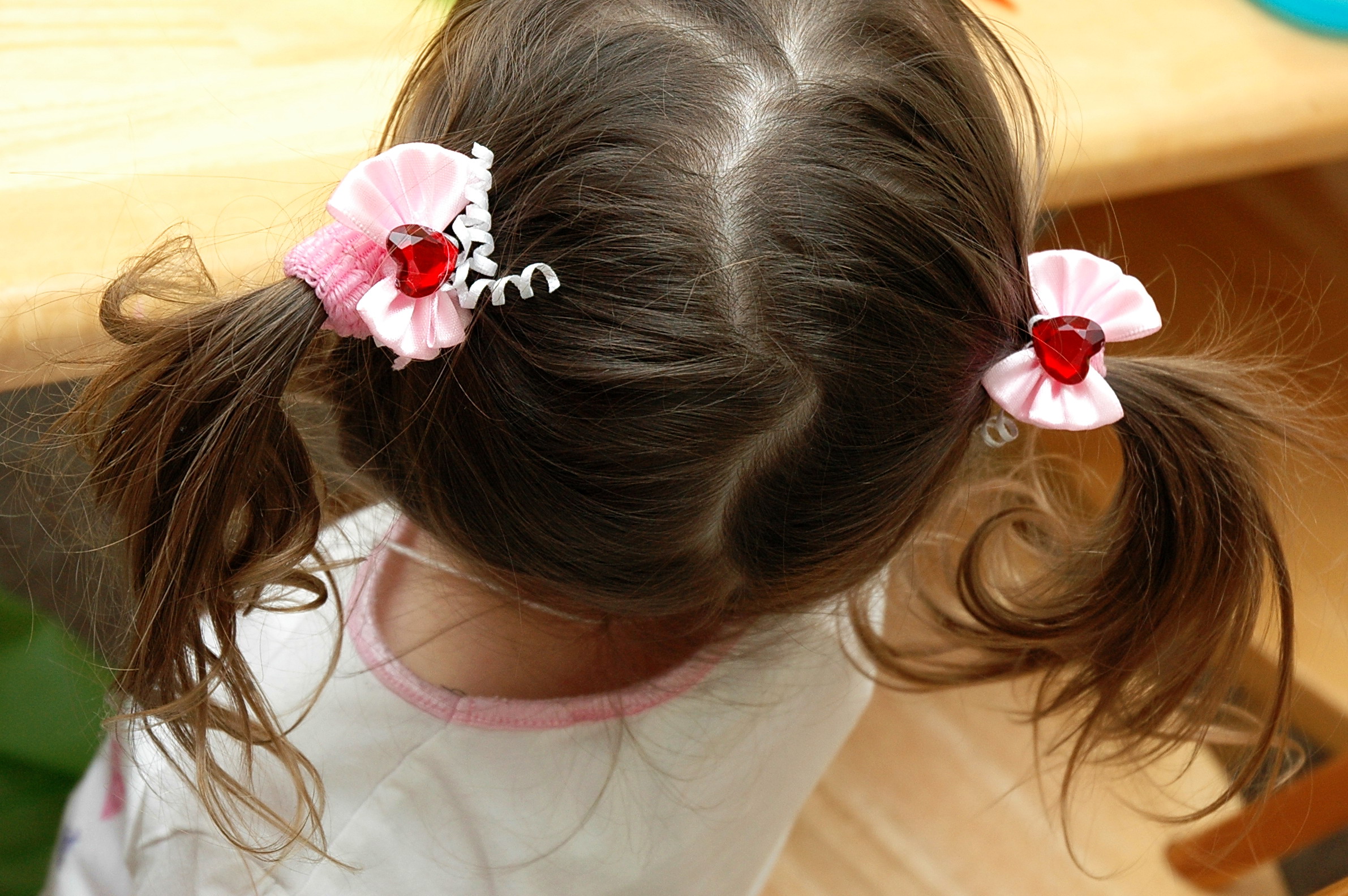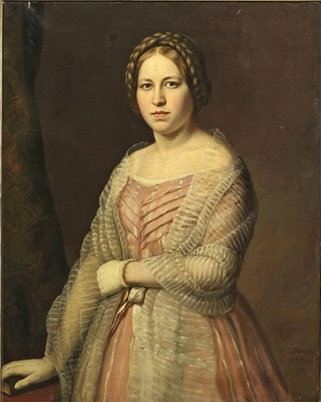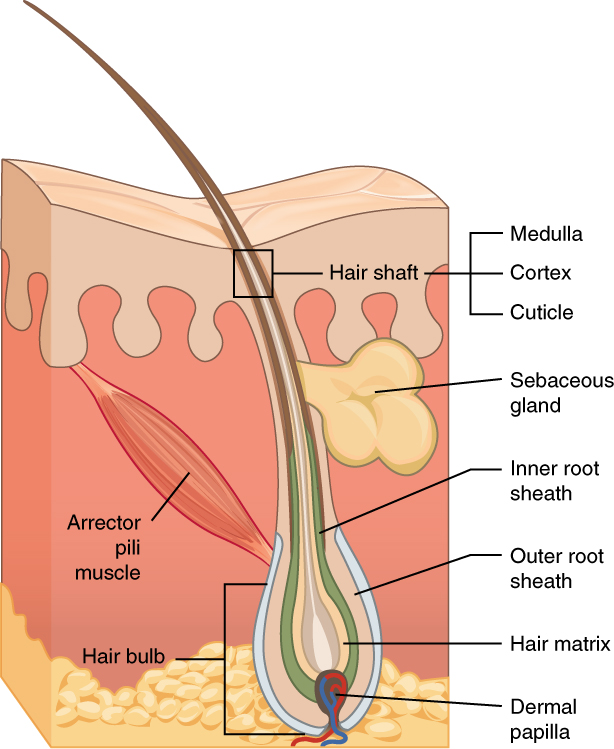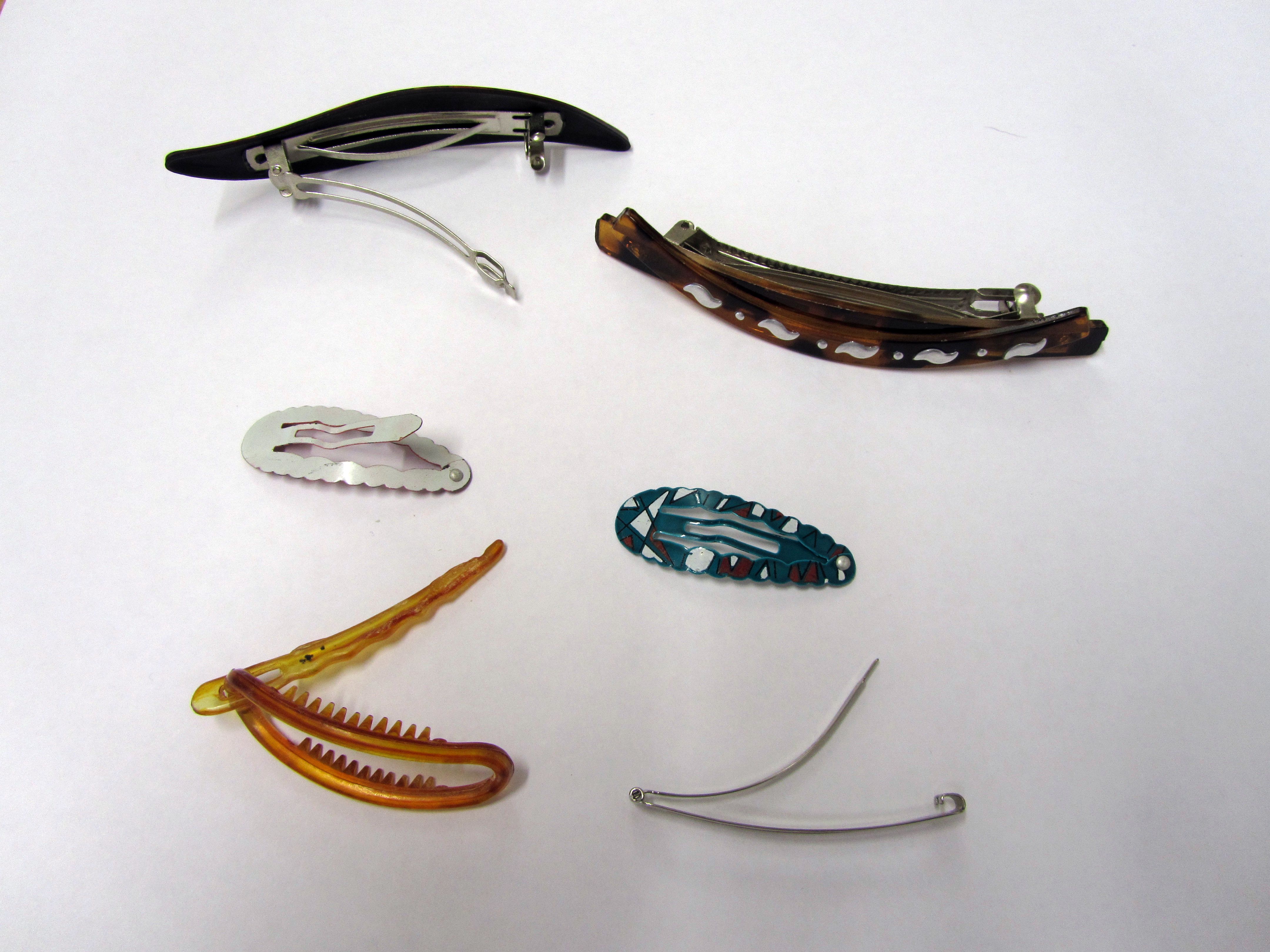|
Ponytail
A ponytail is a hairstyle in which some, most, or all of the hair on the head is pulled away from the face, gathered and secured at the back of the head with a hair tie, clip, or other similar accessory and allowed to hang freely from that point. It gets its name from its resemblance to the tail of a pony. Ponytails are most commonly gathered at the middle of the back of the head or the base of the neck but may also be worn at the side of the head (sometimes considered formal), or on the very top of the head. If the hair is divided so that it hangs in two sections, they are called ''ponytails'', ''twintails'', ''pigtails'', or '' bunches'' if left loose and ''pigtails'', ''plaits'' or ''braids'' if plaited. Ponytails on women and girls The ponytail can be traced back to Ancient Greece, from records of images depicting women with ponytails in ancient Greek artefacts and artworks, such as the frescoes painted millennia ago in Cretes (2000–1500 BC).Sherrow, V., (201 ... [...More Info...] [...Related Items...] OR: [Wikipedia] [Google] [Baidu] |
Hairstyle
A hairstyle, hairdo, haircut, or coiffure refers to the styling of hair, usually on the human head but sometimes on the face or body. The fashioning of hair can be considered an aspect of personal grooming, fashion, and cosmetics, although practical, cultural, and popular considerations also influence some hairstyles. The oldest known depiction of hair styling is hair braiding, which dates back about 30,000 years. Women's hair was often elaborately and carefully dressed in special ways, though it was also frequently kept covered outside the home, especially for married women. Prehistory and history People's hairstyles are largely determined by the fashions of the culture they live in. Hairstyles are markers and signifiers of social class, age, marital status, racial identification, political beliefs, and attitudes about gender. Some people may cover their hair totally or partially for cultural or religious reasons. Notable examples of head covering include women in Islam w ... [...More Info...] [...Related Items...] OR: [Wikipedia] [Google] [Baidu] |
Hair Tie
A hair tie (also called a ponytail holder, hairkeeper, hair band, hair elastic, wrap around, gogo, or bobble) is a styling aid used to fasten hair, particularly long hair, away from areas such as the face. This is usually done as part of a hairstyle such as pigtails, bunches, or ponytails for straight, wavy, and loosely curled hair, and referred to as afro puffs, bunny tails, and "pineapples" for highly curled and highly textured natural hair. Two common types of hair tie are the scrunchie and the elastic. The term can also include a fixed tie or rubber band which is placed ''through'' or around strands to hold specific parts of hair together, rather than tie it or clasp them together like a hair clip. Hair ties' Elasticity (physics), elasticity and wikt: Durability, durability vary according to the material or materials from which they are made. History Hair ties have likely been in use for thousands of years. In the 18th century Wig, wigs used a "queue" or "tail", consistin ... [...More Info...] [...Related Items...] OR: [Wikipedia] [Google] [Baidu] |
Pigtail
A woman with long pigtails and braids. In the context of hairstyles, the usage of the term pigtail (or twin tail or twintail) shows considerable variation. The term may refer to a single braid, but is more frequently used in the plural ("pigtails") to refer to twin braids on opposite sides of the head. Sometimes, the term "pigtails" applies regardless of whether the hair is braided, but there is not widespread agreement on this (in places where this usage is common, unbraided pairs are called doggie ears or bunches and a single bunch, regardless of position on the head, is called a ponytail). Word origin and usage Bedouin woman with pigtails, 1880s. The term pigtail appears in English in the American colonies in the 17th century to describe a twist of chewing tobacco. One of the steps in processing the tobacco was to twist a handful of leaves together to form a compact bunch that would then be cured (dried, either with or without smoking). The term "pigtail" was app ... [...More Info...] [...Related Items...] OR: [Wikipedia] [Google] [Baidu] |
Scrunchie
A scrunchie (or scrunchy) is a fabric-covered elastic hair tie used to fasten medium to long hair types. The elastic hair tie is encased in loose fabric that forms a ruffle when twisted around a ponytail. Large, elaborate styles and diminutive, unassuming forms are available in many different colors, fabrics, and designs. History Philips E. Meyers came up with a concept for an elastic-band-covered fabric in 1963 and filed a patent related to hair accessories in 1986 titled "Hair Braiding and Tying Device." Colleen Larkin created elastic-band-covered fabric products known as "Ribbonbands" which were created and sold nationally in 40 states and in stores like Macy's and Neiman Marcus in the US from 1980-1984. In California during the early to mid 80s, The Body Shop developed and sold ponytail holders similar to the "Ribbonbands" design, which they called "Silkies" and "Stretchies". Rommy Hunt Revson received the patent for the scrunchie in 1987. She created the first prototype ... [...More Info...] [...Related Items...] OR: [Wikipedia] [Google] [Baidu] |
Braid (hairstyle)
Braids (also referred to as plaits) are a complex hairstyle formed by interlacing three or more strands of hair. Braiding has never been specific to any one part of the world, ethnic type, hair type or culture, but has been used to style and ornament human and animal hair for thousands of years world-wide in various cultures around the world. The simplest and most common version is a flat, solid, three-stranded structure. More complex patterns can be constructed from an arbitrary number of strands to create a wider range of structures (such as a fishtail braid, a five-stranded braid, rope braid, a French braid and a waterfall braid). The structure is usually long and narrow with each component strand functionally equivalent in zigzagging forward through the overlapping mass of the others. Structurally, hair braiding can be compared with the process of weaving, which usually involves two separate perpendicular groups of strands (Warp (weaving), warp and weft). History The olde ... [...More Info...] [...Related Items...] OR: [Wikipedia] [Google] [Baidu] |
Hair
Hair is a protein filament that grows from follicles found in the dermis. Hair is one of the defining characteristics of mammals. The human body, apart from areas of glabrous skin, is covered in follicles which produce thick terminal and fine vellus hair. Most common interest in hair is focused on hair growth, hair types, and hair care, but hair is also an important biomaterial primarily composed of protein, notably alpha-keratin. Attitudes towards different forms of hair, such as hairstyles and hair removal, vary widely across different cultures and historical periods, but it is often used to indicate a person's personal beliefs or social position, such as their age, gender, or religion. Overview Meaning The word "hair" usually refers to two distinct structures: #the part beneath the skin, called the hair follicle, or, when pulled from the skin, the bulb or root. This organ is located in the dermis and maintains stem cells, which not only re-grow the hair afte ... [...More Info...] [...Related Items...] OR: [Wikipedia] [Google] [Baidu] |
Hair Clip
A barrette (American English), also known as a hair slide (British English), or a hair clip, is a clasp for holding hair in place. They are often made from metal or plastic Plastics are a wide range of synthetic polymers, synthetic or Semisynthesis, semisynthetic materials composed primarily of Polymer, polymers. Their defining characteristic, Plasticity (physics), plasticity, allows them to be Injection moulding ... and sometimes feature decorative fabric. In one type of barrette, a clasp is used to secure the barrette in place; the clasp opens when the two metal pieces at either side are pressed together. Barrettes are worn in several different ways partly according to their size, with small ones often used at the front and large ones in the back to hold more hair. They are used to keep hair out of the eyes, or to secure a bun, French twist, or ponytail. Short metal "clip" barrettes are sometimes used to pull back front pieces of hair. Barrettes are also sometimes us ... [...More Info...] [...Related Items...] OR: [Wikipedia] [Google] [Baidu] |
Barbie
Barbie is a fashion doll created by American businesswoman Ruth Handler, manufactured by American toy and entertainment company Mattel and introduced on March 9, 1959. The toy was based on the German Bild Lilli doll, Bild Lilli doll which Handler had purchased while in Europe. The figurehead of an eponymous brand that includes a range of fashion dolls and accessories, Barbie has been an important part of the toy fashion doll market for over six decades. Mattel has sold over a billion Barbie dolls, making it the company's largest and most profitable line. The brand has expanded into Barbie (media franchise), a multimedia franchise since 1984, including video games, List of Barbie films, animated films, television/web series, and a Barbie (film), live-action film. Barbie and her male counterpart, Ken (doll), Ken, have been described as the two most popular dolls in the world. Mattel generates a large portion of Barbie's revenue through related merchandising, merchandise —access ... [...More Info...] [...Related Items...] OR: [Wikipedia] [Google] [Baidu] |
Chinese Meal By Lai Afong, C1880
Chinese may refer to: * Something related to China * Chinese people, people identified with China, through nationality, citizenship, and/or ethnicity **Han Chinese, East Asian ethnic group native to China. **''Zhonghua minzu'', the supra-ethnic concept of the Chinese nation ** List of ethnic groups in China, people of various ethnicities in contemporary China ** Ethnic minorities in China, people of non-Han Chinese ethnicities in modern China ** Ethnic groups in Chinese history, people of various ethnicities in historical China ** Nationals of the People's Republic of China ** Nationals of the Republic of China ** Overseas Chinese, Chinese people residing outside the territories of mainland China, Hong Kong, Macau, and Taiwan * Sinitic languages, the major branch of the Sino-Tibetan language family ** Chinese language, a group of related languages spoken predominantly in China, sharing a written script (Chinese characters in traditional and simplified forms) *** Standard Chines ... [...More Info...] [...Related Items...] OR: [Wikipedia] [Google] [Baidu] |
Sandra Dee
Sandra Dee (born Alexandra Zuck; April 23, 1942 – February 20, 2005) was an American actress. Dee began her career as a child model, working first in commercials and then film in her teenage years. Best known for her portrayal of ingénues, Dee earned a Golden Globe Award for New Star of the Year – Actress, Golden Globe Award as one of the year's most promising newcomers for her performance in Robert Wise's ''Until They Sail'' (1957). She became a teenage star for her performances in ''Imitation of Life (1959 film), Imitation of Life'', ''Gidget (film), Gidget'' and ''A Summer Place (film), A Summer Place'' (all released in 1959), which made her a household name. Dee's acting career waned in the late 1960s. In 1967, her highly publicized marriage to Bobby Darin ended in divorce and Universal Pictures dropped her contract. Dee appeared in the 1970 independent horror film ''The Dunwich Horror (film), The Dunwich Horror and'' occasionally in television productions throughout ... [...More Info...] [...Related Items...] OR: [Wikipedia] [Google] [Baidu] |
Gidget (film)
''Gidget'' is a 1959 American CinemaScope comedy film directed by directed by Paul Wendkos and starring ''Variety'' film review; March 18, 1959, page 6.''Harrison's Reports'' film review; March 21, 1959, page 46. Sandra Dee, Cliff Robertson, James Darren, Arthur O'Connell, and the Four Preps. The film is about a teenager's initiation into the California surf culture and her romance with a young surfer. The film was the first of many screen appearances by the character Gidget, created by Hollywood writer Frederick Kohner (based on his daughter Kathy). The screenplay was written by Gillian Houghton, who was then head writer of the soap opera ''The Secret Storm'', using the pen name Gabrielle Upton. This would be Upton's sole contribution to the Gidget canon. The story was based on Kohner's 1957 novel '' Gidget, the Little Girl with Big Ideas''. The film, which received one award nomination, not only inspired various sequel films, a television series, and television films, but ... [...More Info...] [...Related Items...] OR: [Wikipedia] [Google] [Baidu] |









